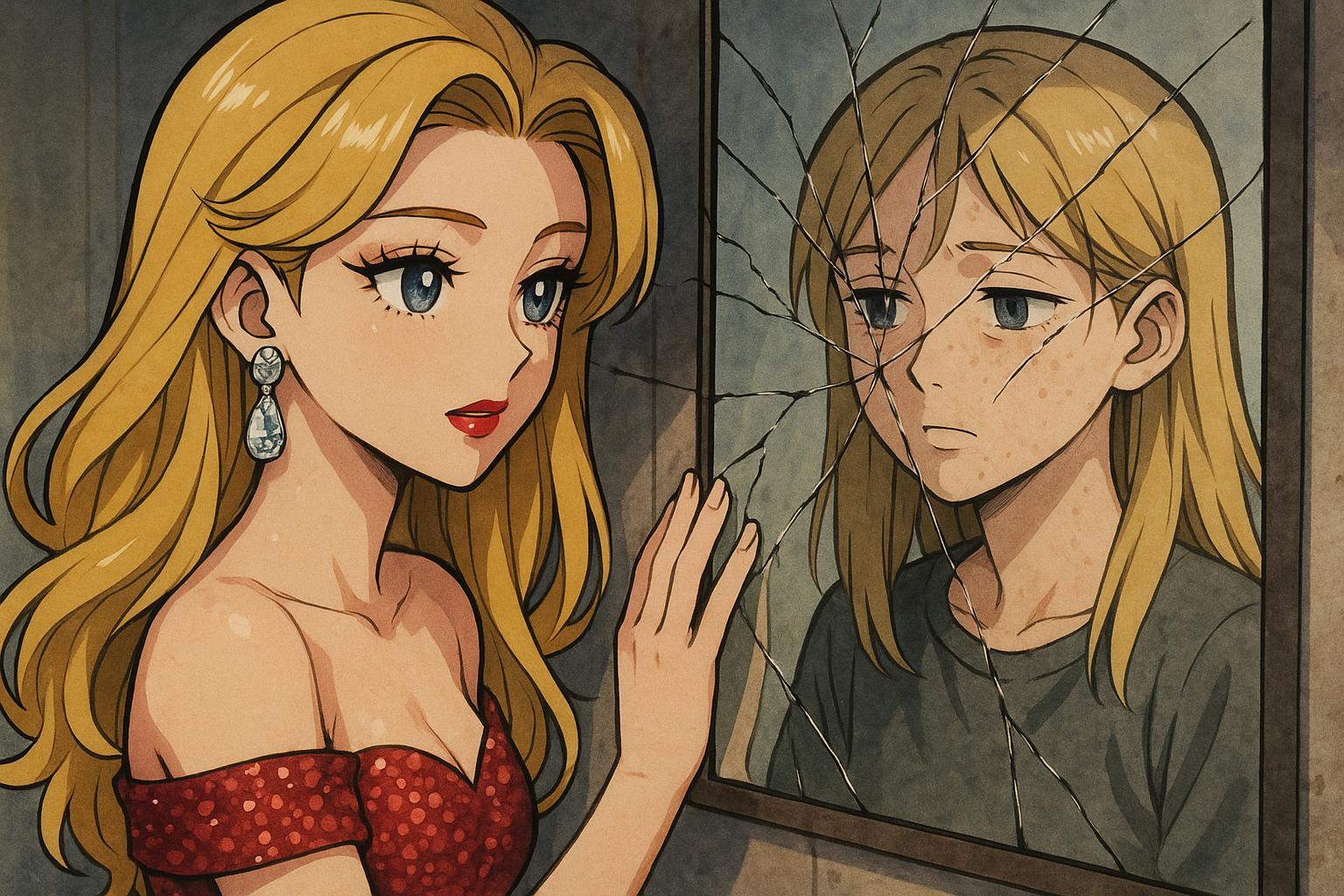In a world enamoured by celebrity glamour, the juxtaposition between a star's polished exterior and the everyday beauty of the average person has sparked intense conversations about authenticity, beauty standards, and the true cost of fame. While the likes of Linda Evangelista, Victoria Beckham, and Jennifer Lopez epitomise the allure of A-list aesthetics, recent discussions suggest that their radiant appearances may not reflect the reality of life without the privileges of wealth and access to top-notch beauty professionals.
The buzz surrounding AI-generated images that depict celebrities without their typical enhancements has highlighted a growing sentiment among fans. Many are beginning to see these digitally altered representations as a stark reminder of how societal beauty standards are skewed and often unrealistic, giving rise to the adage: “You’re not ugly; you’re just poor.” The implications of this quote resonate deeply, suggesting that were it not for the substantial financial backing that allows stars to regularly undergo cosmetic procedures, hair treatments, and personal training sessions, their looks might not differ vastly from the average person.
Celebrities like Evangelista have been candid about the toll that maintaining such standards can take. The supermodel recently opened up about her struggles with self-acceptance, stating, “I have to go through therapy to like what I see when I look in the mirror." Her experiences with body image stemmed from severe complications after a cosmetic procedure, underscoring how even the most glamorous lives can be marred by regret and pain. Recently referring to beauty as something that must be earned through life’s challenges, she expressed a newfound acceptance towards aging, amidst a broader dialogue on the nature of beauty and its implications.
Victoria Beckham, often scrutinised for her ageless appearance, has faced similar allegations regarding her looks. Despite her claims of using only tape and push-up bras to explain her breast augmentation, past legal admissions confirm surgeries that contradict her narrative. This creates a complex tapestry of honesty versus public relations, where perceptions of beauty come heavily intertwined with authenticity, and where a celebrity's words can be overshadowed by public scepticism and expert commentary. Dr Jonny Betteridge suggested that her remarkably tight visage may result from surgical interventions indicative of the pervasive yet hidden nature of cosmetic enhancements in Hollywood.
Catherine Zeta-Jones, too, admits her stunning looks come from a combination of pampering and luxury few can afford. She has used personal trainers and nutritionists to maintain her physique and regularly employs beauty experts to ensure her red-carpet readiness. Such revelations reveal not just an individual narrative, but a broader cultural commentary on how wealth enables refined beauty standards, isolating the charm of cinematic icons from the average woman’s experience.
This divide between celebrity and reality is further exemplified by figures like Lindsay Lohan, who recently made headlines for her revitalised looks yet remains vague about the specifics of her skincare regimen versus potential cosmetic procedures. Experts have postulated about various potential treatments she may have undergone, from facelifts to fillers, raising the question of how much of her transformation is the result of modern aesthetics innovations versus traditional cosmetic surgery. The ongoing discussion paints a picture of a beauty industry increasingly driven by technology that prioritises seamless results, often leaving the truth blurred and consumers left guessing.
Moreover, social media amplifies these ideals, providing a stage for stars to craft and curate pristine personas while engaging in a dialogue riddled with speculation and admiration. This interplay is perhaps best highlighted by the Kardashian-Jenner clan, whose presence has dramatically shifted beauty standards. Kylie Jenner’s transparency about her breast augmentation at 19 signifies a potential shift towards greater openness regarding cosmetic enhancements, yet the underlying current remains one of aspirational aesthetics that shape societal expectations of beauty.
As more celebrities reveal their experiences with surgery, including regrets and recoveries, the conversation around cosmetic procedures continues to evolve. However, the balance between honesty and the allure of perfection remains delicate. For many, the celebrity’s storied path through beauty offers both inspiration and caution—a consistent reminder of the unseen battles behind seemingly flawless faces.
In an era where the boundary between natural beauty and cosmetic enhancement is increasingly permeable, celebrities serve as both aspirational figures and poignant examples of beauty’s complexities. Their stories invite reflection on our ideals and the lengths we adopt to meet them, leaving society to ponder: what does it truly mean to be beautiful in a world defined by image and access?
Reference Map:
- Paragraph 1 – [1], [2]
- Paragraph 2 – [1], [3], [4]
- Paragraph 3 – [5], [2]
- Paragraph 4 – [4], [6]
- Paragraph 5 – [1], [6]
- Paragraph 6 – [2], [3]
- Paragraph 7 – [5], [6]
- Paragraph 8 – [2], [3]
Source: Noah Wire Services
